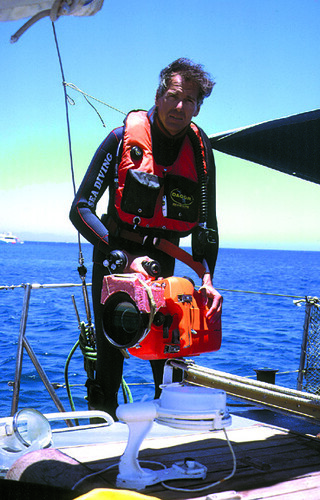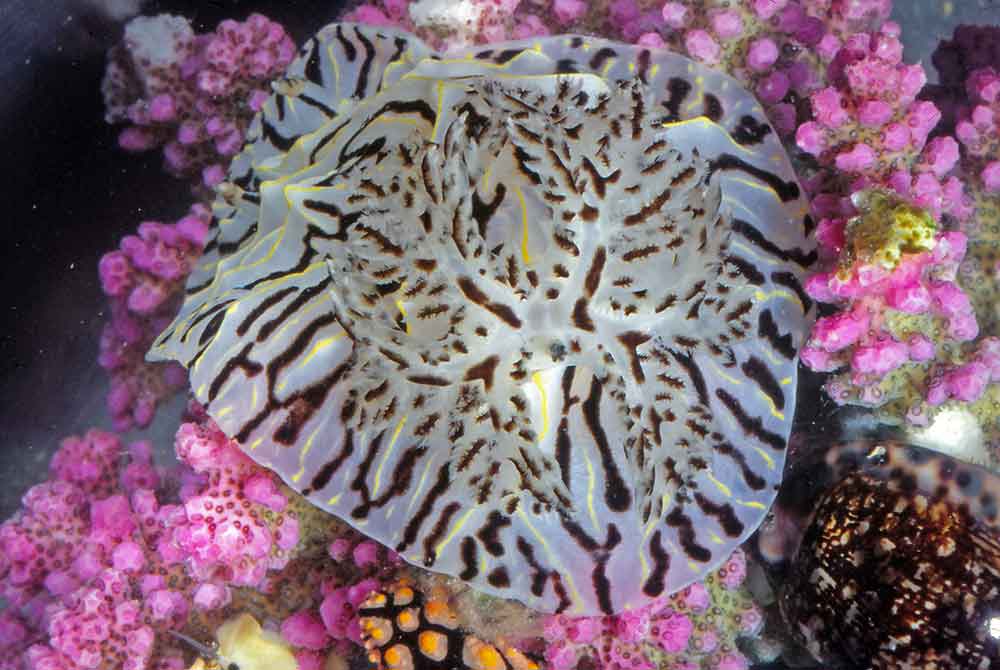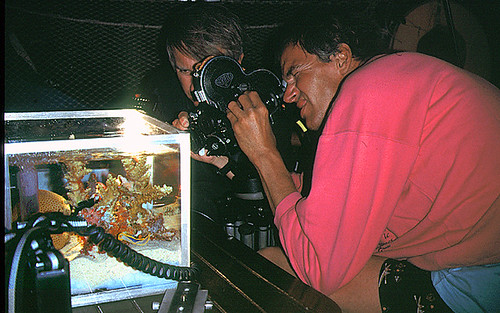“Carnatic: the nameless ship”
The film , projected on Italia 1 (a Fininvest TV channel) in 1990 won a very important award at the “Festival International de l’image sousmarine” at Antibes (France). Its story is worth telling.
 Ready to dive on the Carnatic’s wreck to shoot scenes of the film Carnatic, a nameless ship.
Ready to dive on the Carnatic’s wreck to shoot scenes of the film Carnatic, a nameless ship.
During the shooting of the film I learnt many tricks I didn’t know. For instance, how to film at close up all those little animals not willing to let me put on their nose underwater a film camera that must seem to them as big as a house.
I learnt that those small animals (fishes, molluscs, crustacea, plants etc) must be captured painlessly, and kept on board where they can be lightened and filmed at leisure before putting them into the water again.
It’s a little more than 6 cm e long and it would be unthinkable to lighten it conveniently….beside the fact of convincing it to keep still… bu there is the trick. You bring from home a small makeshift aquarium, dismantled, with perspex walls (unbreakable during the travel) and what is needed to filter water. Once assembled, with the help of an epoxidic glue, all you need is a bit of rock and some vegetation where these organisms live. You must be very cautious not to damage the flora and fauna. With some big transparent plastic sacks which can be easily closed by way of a double nylon cord sliding around the mouthpiece, you can capture fishes and every other organism (they are not alarmed because they don’t see the plastic ) to put into the aquarium, and work calmly. When you are finished, the fishes are put again into the water..
To macrofilm it’s useful to have one or two more perspex walls to oblige the animals to stay in the depth of field you have. A few hundreds of watt are enough (the more powerful is the light, the more depth of field you have). If you work by night you will avoid filming the space behind the aquarium, because the background will be in the dark.

 Italiano
Italiano


